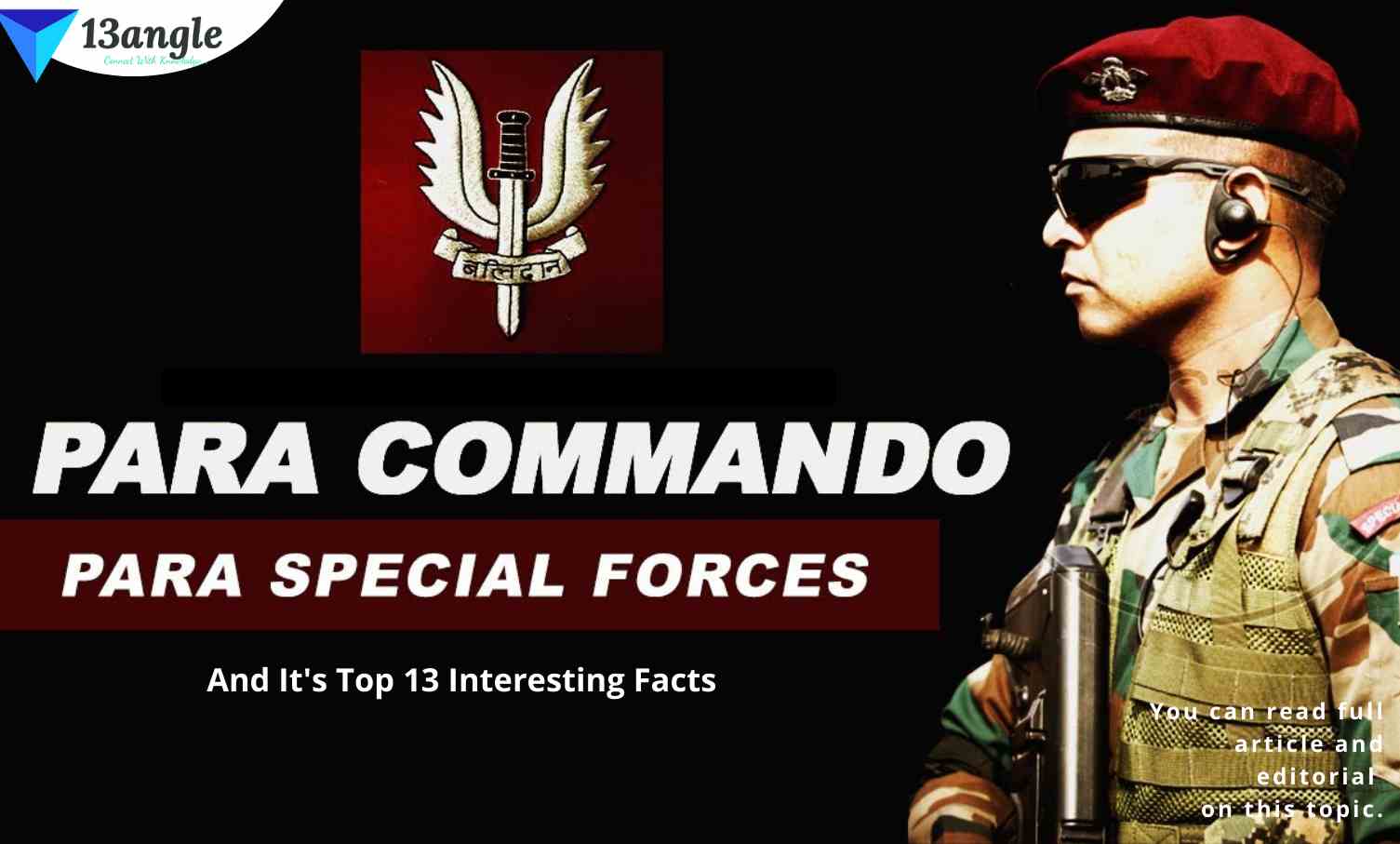- Umang Sagar
- Defence, Recent article
The Scorpion Kings: Para Special Forces
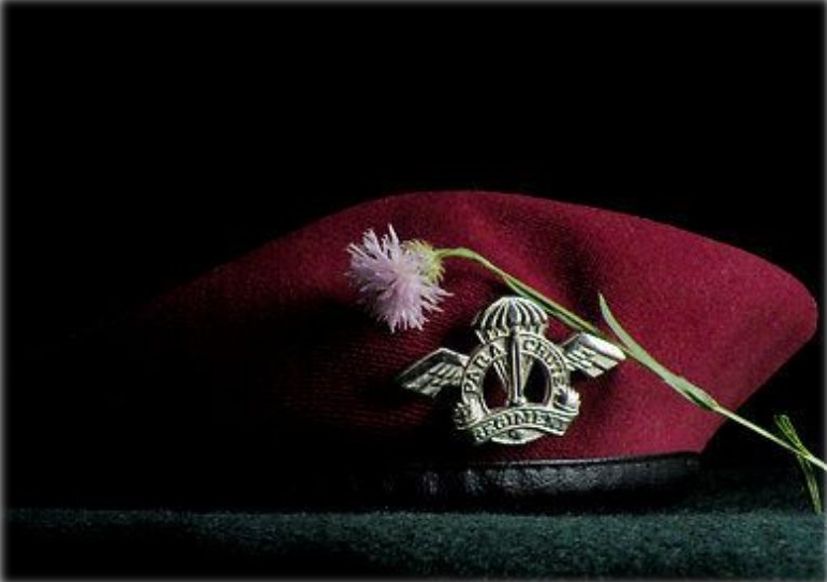
Introduction
Special Forces have played an important role throughout the history of warfare, whenever the aim was to achieve disruption by “hit and run” and sabotage, rather than through more traditional conventional combat. Other significant roles lay in reconnaissance, providing essential intelligence about the enemy, and increasingly in combating irregular forces, their infrastructure, and activities. The British Army deployed two Special Forces during their border wars: the Corps of Guides formed in 1846 and the Gurkha Scouts (a force that was formed in the 1890s and was first used as a detached unit during the 1897-1898 Tirah Campaign). During the Second Boer War (1899-1902) the British Army felt the need for more such specialized units.
Scouting units such as the Lovat Scouts, a Scottish Highland regiment made up of exceptional woodsmen outfitted in ghillie suits and well-practiced in the arts of marksmanship, fieldcraft, and military tactics filled this role. This unit was formed in 1900 by Lord Lovat and early on reported to an American, Major Frederick Russell Burnham, and the Chief of Scouts under Lord Roberts. After the war, Lovat’s Scouts went on to formally become the British Army’s first sniper unit. Additionally, the Bushveldt Carbineers, formed in 1901, can be seen as an early unconventional warfare unit. All in all, out of the 12,000 Para Special Forces commandos, each one of them has been trained to the most difficult level of training and equipped with talent that could infiltrate enemy lines, bash the enemies and return home unscratched.
Differences Between Armed Forces And Para Special Forces
1. Military
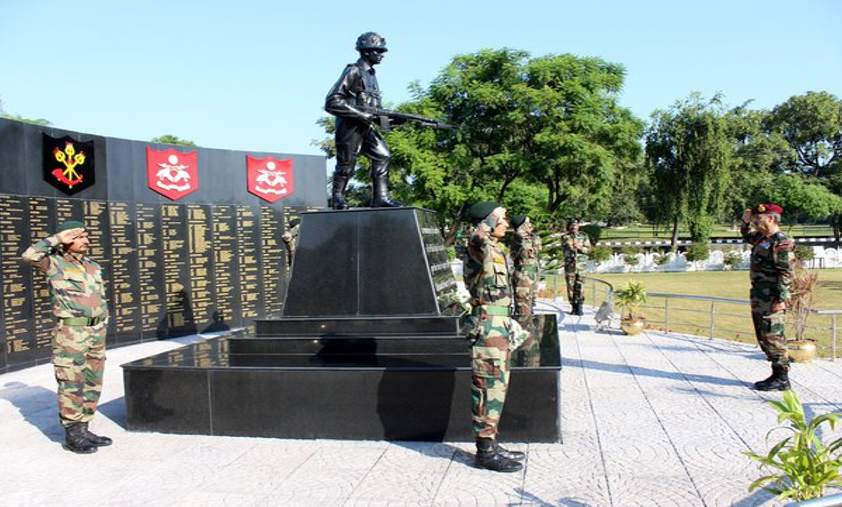
A military or defense force is a professional organization formally authorized by the country to use lethal or deadly force and weapons to support the interests of the state. Although it is called defense forces in India, its actions are both defensive and offensive.
It typically consists of an Army, Navy, Air Force, and Coast Guard.
2. Paramilitary Forces

- As per international usage, any force which has officers of the military managing it but it comes under the control of MHA (Ministry of Home Affairs) is a Paramilitary. By definition only the Indian Coast Guard, Assam Rifles, and the Special Frontier Forces fall under this. The Paramilitary forces in India also constitute State Reserve Police Forces. They need special provisions of law to operate in aid of Civil Authorities, similar to the Armed Forces. Since they do not have police powers, they can operate only once the State Government declares an area as disturbed.
History
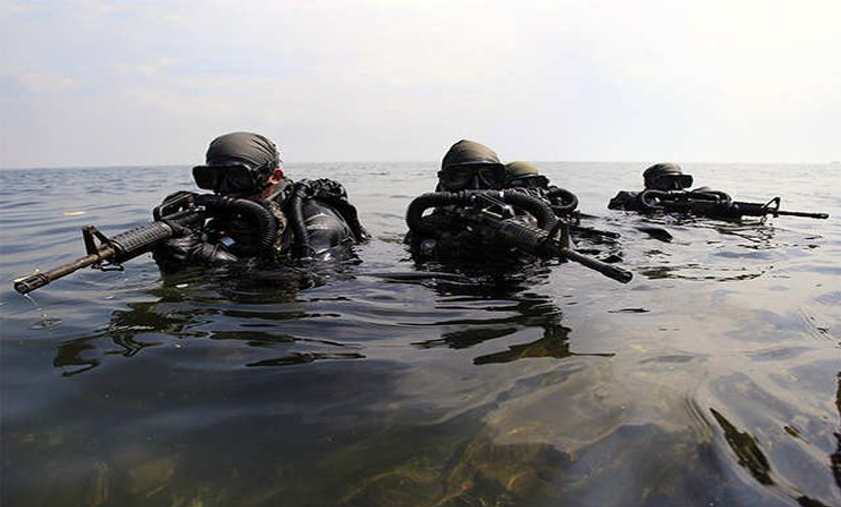
Special Forces are military units trained to conduct special operations. Special operations as military activities are conducted by specially designated, organized, trained, and equipped forces, manned with selected personnel, using unconventional tactics, techniques, and modes of employment. Thus, Special Forces are not only elite and also special as they are used for specialized combat tasks, conducting missions that general-purpose forces either cannot perform or not with acceptable levels of risk and costs. Often, Special Forces are confused with units that perform covert operations for intelligence organizations, operating under different authorities and employing different skill sets in order to keep the sponsorship of the units and their activities hidden. Sometimes elite military units are used to perform special operations, and sometimes Special Forces are loaned to intelligence organizations to perform covert operations.
The history of Indian Special Forces revolves around the raising of Parachute battalions by the British Indian Army and subsequently the formation of the Parachute Regiment in 1952. The Regiment successfully conducted airborne operations and commando raids across the borders. Indian Army had commando battalions. Later these units were designated as special forces and are tasked with specialized tasks behind the enemy positions. During the 1971 conflict, a need for a Naval component of Special Forces was felt after experimenting with amphibious operations (Operation Jackpot) where an amphibious landing was planned at Cox Bazaar (then Pakistani Naval Base, now Bangladesh). Marine Commandos (MARCOS) who are patterned on the lines of SEALS of USA was raised after this experience. After the assassination of the erstwhile Prime Minister, Mrs. Indira Gandhi a decision to raise a force under the Ministry of Home (MHA) was taken. Besides the security of VVIPs, it was envisaged that this newly raised force would also cater for elements of CT, anti-hijacking, and anti-kidnapping. Consequently, in 1984, the National Security Guard was formed. NSG was carved out of Special Group and like its creator, it too was, and is, manned by troops of Indian Army (IA), essentially from infantry. Formed in 2004, GARUDs of the Indian Air Force (IAF) are quite similar to the Royal Air Force Regiment (RAFR) of the UK which was raised as a response to ‘Blitzkrieg’ during the Second World War. Like RAFR the GARUD’s primary task is to carry operations in the enemy territory in support of the ground battles.
Training & Equipments
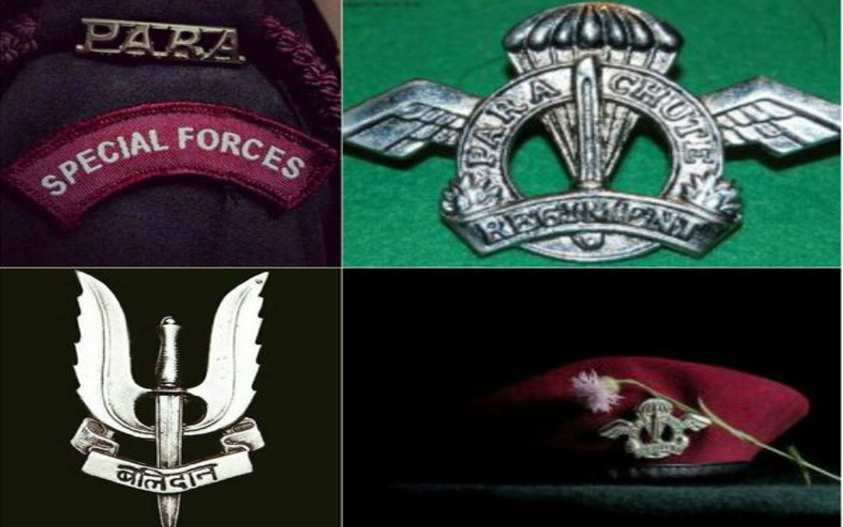
The shortlisted candidates are sent to the Paratroopers’ Training School (PTS) in Agra, Uttar Pradesh, for their Paratrooper Basic Course, which involves both ground and air training. The passing criteria require a minimum of five static line leaps from a height of 22500 feet, including one at night and one with full battle gear. The individual is granted the desired parachute wings, which are worn on the right chest, as well as the Maroon Beret, after completing the five jumps. The Special Forces Tab and the Balidan badge are issued only when the probationer has served for six months in hostile regions or one year overall.
Members of the Special Forces are further trained in specialized modes of infiltration and exhilaration, either by air (fight freefall) or by sea, as training is a constant process (combat diving). Some students return to PTS to complete the free-fall course, which requires at least 50 jumps from heights of up to 22,500 feet. The procedures of HALO (High Altitude Low Opening) and HAHO (High Altitude High Opening) are both taught. The ability to conduct stealth insertions at distances of up to 50 kilometers using the HAHO technology and specially built maneuverable parachutes known as HAPPS (High Altitude Parachute Penetration System)/AMX-310 has also been perfected. The commandos are dispatched to Kochi’s Naval Diving School for combat diving training.
The day begins with a 5-kilometer run in the morning. The techniques of infiltration, assault, room and building involvement, and ambush have all been polished and perfected. CQB, urban warfare, counter-terrorist warfare, and unarmed fighting are all given special focus. Night and weapons training, as well as fieldcraft, are done, which include 20-kilometer hikes with 60 kg (132 lb) loads and live ammo. Monthly forced marches with 65 kg combat loads over distances of 30 to 50 miles are also carried out, as well as quarterly night drops with full combat loads. The commandos also attend a variety of Army-run institutions that specialize in unconventional warfare in addition to their in-house training.
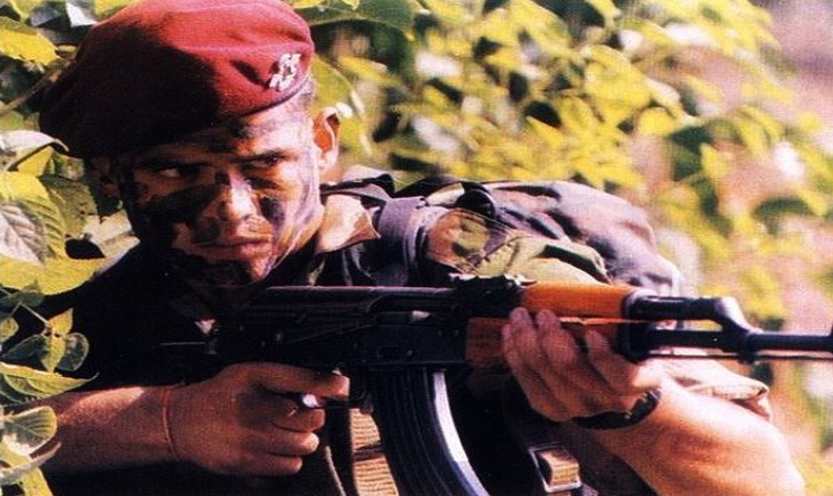
The Junior Leaders’ Commando Training Camp in Belgaum, Karnataka, the Parvat Ghatak School (for high altitude mountain warfare) in Tawang, Arunachal Pradesh, the Desert Warfare School in Rajasthan, the High Altitude Warfare School (HAWS) in Sonamarg, Kashmir, and the Counterinsurgency and Jungle Warfare School (CIJWS) in Vairengte, Mizoram, and the Indian Special Forces Training School in Na These schools are among the best of their kind in the world, and they regularly welcome international students.
All the equipment for the para commandos is manufactured indigenously by the Indian Ordnance Factories controlled by the Ordnance Factories Board, Ministry of Defense, Government of India.
- Browning Hi-Power 9mm Semi-automatic pistol
- Glock 17 9mm Semi-automatic pistol
- SIG P226 9mm Semi-automatic pistol
- Heckler & Koch MP5 Sub-machine gun
- 1A SMG Sub-machine gun
- INSAS Assault rifle
- AKM and AKMS Assault rifle
- AK-103 Assault rifle
- SA Vz. 58P and SA Vz. 58V Assault rifle
- TAR-21 Tavor Bullpup Assault rifle
- M4A1 Carbine
- FN SCAR assault rifle
- 1A SLR Battle rifle
- Mauser SP66 Bolt-action sniper rifle
- SVD Dragunov Semi-automatic sniper rifle
- IMI Galil Sniper Semi-automatic sniper rifle
- Heckler & Koch MSG90 Semi-automatic sniper rifle
- Gepard GM6 Lynx Anti-materiel Rifle.
Categories Of Operations
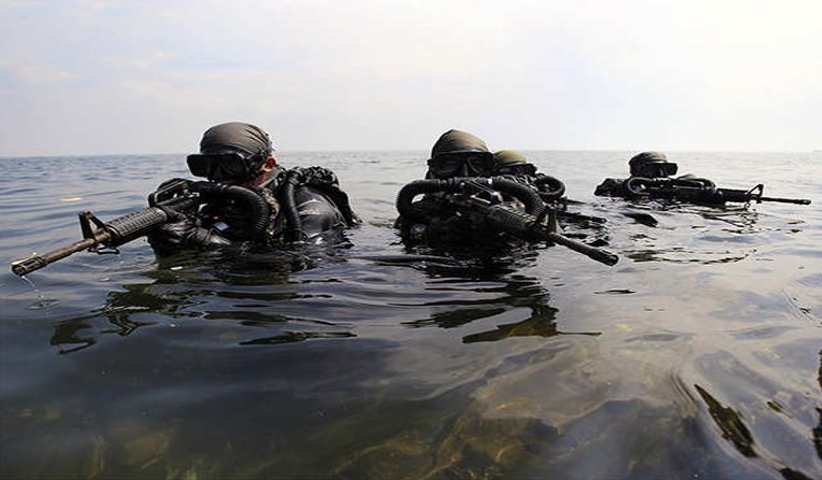
The Parachute Regiment presently has nine Special Forces, three Special Forces (Airborne), two Territorial Army, and one Counter-Insurgency (Rashtriya Rifles) battalions in its fold.
In the mid-1980s, there were plans of taking away the three Para commando battalions from the Parachute Regiment and bringing them together under an individual specialized organization, the Special Forces Regiment. However, after several logistic and administrative obstacles, these plans were abandoned and they continue to be trained and recruited by the Parachute Regiment.
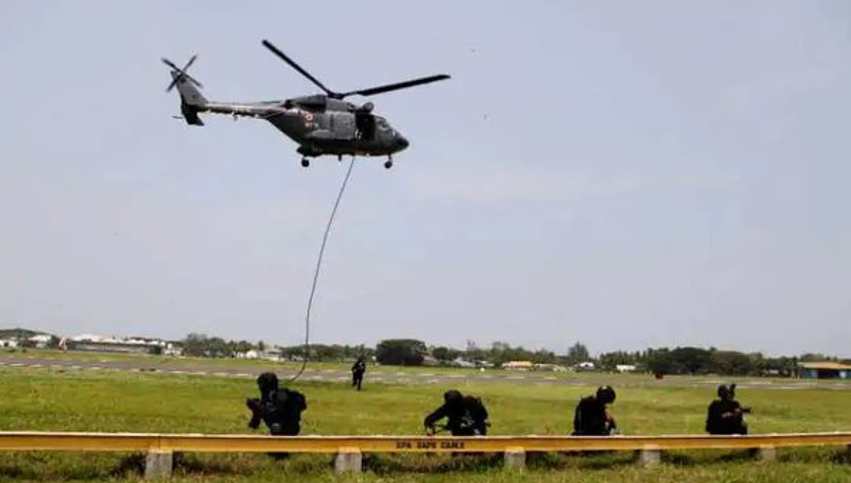
- Para (SF) operates in assault teams, which work individually or in coordination with other teams or units. Previously, each Para (SF) battalion had a geographical specialization and remained assigned to that sector. 1 Para (SF), with deep-sea divers in its ranks, specialized in anti-hijacking and hostage crises; 9 Para (SF), with experienced mountaineers, was dedicated to mountainous and high-altitude warfare, 10 Para (SF) for desert warfare and the 21 Para (SF) for jungle warfare. However, these specializations have been dispensed with, and all Special Forces units are equally capable of operating in all conditions. Major functions include:
- Intelligence collection, Special reconnaissance
- Subversion and sabotage of vital enemy infrastructure and communications through deep penetration and surgical strikes behind enemy lines.
- Covert and overt/Direct action special operations as part of the Indian Army’s counter-terrorist and counter-insurgency operations.
- Hostage rescue operations within and beyond Indian territory.
Importance & Role
The Special Operations Forces are particularly important in the Indian context because the nature of conflict is essentially unconventional and can only be addressed by them. To keep up with the changing nature of counter-insurgency and guerrilla operations, their training, operational procedures, tactics, and equipment are updated to maintain an advantage over hostile forces. Smaller, highly mobile SOF troops with superior weaponry can blend into dangerous environments and execute their objectives, which is usually the major rationale for their involvement against hostile forces if conventional capabilities are insufficient.
India has also got an elite counter-terrorist squad called National Security Guards (NSG). They provide security to VIPs, conduct anti-sabotage checks, and are responsible for neutralizing terrorist threats to India’s vital installations. Some of the important missions they have played a pivotal role in are Operation Black Thunder, Operation Ashwamedh, Operation Black Tornado, and Operation Cyclone.
Foreign Policy Imperatives
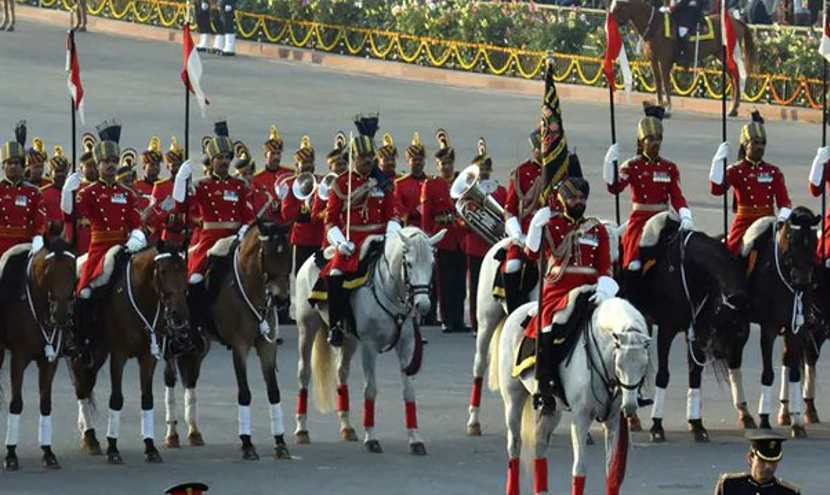
The Special Operations Forces play an instrumental role in achieving objectives of both foreign and security policies. They are considered to be a force-multiplier and have a greater impact against enemy assets using a small team to operate swiftly and decisively, thereby causing greater-than-expected damage. One instance of the SF being employed for such an action goes back to the Indian military action in East Pakistan in 1971. It was perhaps only the second (the first being Operation Vijay in 1961 to liberate Goa state from Portuguese control) instance of Indian forces entering the borders of a sovereign nation without permission in order to protect democratic and basic freedoms and the populace from genocide, authoritarian rule, and persecution by Pakistani state forces.
Indian Special Operations Forces played an understated yet crucial role in the Liberation War of Bangladesh, as it came to be known, through the Special Frontier Force and the PARA (SF). Both of them had a direct impact on Indian foreign policy. The SFF’s vital contributions included penetrating deep inside East Pakistan and initiating guerrilla campaigns to neutralize soldiers, key military infrastructure, communication lines, logistics, and weapons supplies. They also prevented Pakistani troops from escaping into present-day Myanmar. Their entire involvement, under the cover of plausible deniability with the R&AW’s blessings, was to train Bengali freedom fighters and conduct special operations against Mizo and Naga insurgents.
But military influence, power, or force are not the only tools of foreign policy, and nor is any military action taken in isolation. Other tools of the foreign policy include intelligence and information; security policy; diplomacy; aid, economic development, and trade.
Movies And Web Series
1. Jeet Ki Zid
A new online series is based on the true story of Major Deependra Singh Sengar, a retired Indian Army Special Forces officer who was paralyzed from the waist down during the Kargil War, but whose unwavering attitude enabled him to get back on his feet. Major Deependra was played by Amit Sadh, the series was directed by Vishal Mangalorkar and is available on ZEE5.
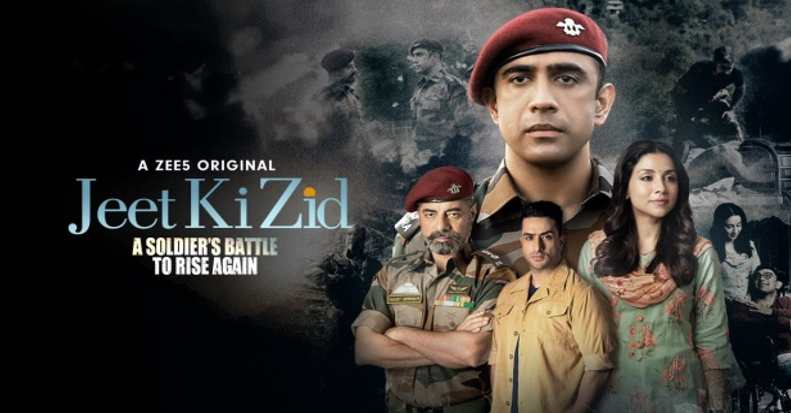
2. Special OPS
The spy thriller is based on Indian intelligence’s role in a succession of real-life terror strikes in India over the last 19 years, notably the Mumbai 26/11 assaults. In important roles, it features Kay Kay Menon, Divya Dutta, Saiyami Kher, Karan Tacker, Vinay Pathak, Muzammil Ibrahim, and others. The online series was directed by Neeraj Pandey & Shivam Nair and is accessible on Disney+ Hotstar.
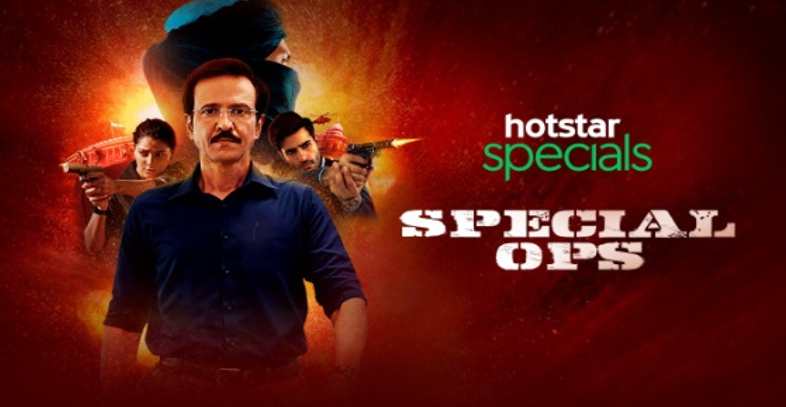
3. The Test Case
Captain Shikha Sharma, played by Nimrit Kaur, is the sole female in a group of Indian Army officers training to join the Special Forces, and the film is directed by Nagesh Kukunoor. Akshay Oberoi, Atul Kulkarni, and Anup Soni play significant parts in the film and can be found on ALT Balaji and ZEE5.

4. Uri: The Surgical Strike
A fictionally dramatized account of the true events of the retaliation to the 2016 Uri attack, the film stars Vicky Kaushal, Yami Gautam, Mohit Raina, Kirti Kulhari, and Paresh Rawal in pivotal roles, and tells the story of Major Vihaan Singh Shergill of the Para Special Forces. The Indian Army had launched surgical strikes against terrorist camps in Pakistan Occupied Kashmir. The strike on September 28, 2016, was in response to an attack by Pakistan-based terrorists on an army base in Kashmir’s Uri on September 18 in which 19 soldiers were killed. The movie, however, can be accessed on ZEE5.
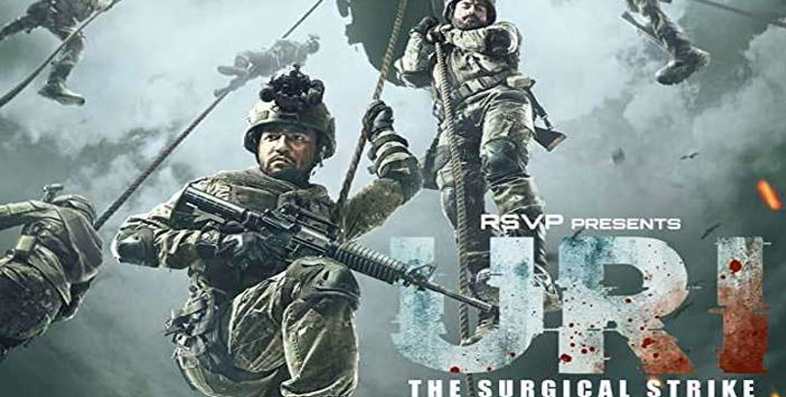
Recent Missions
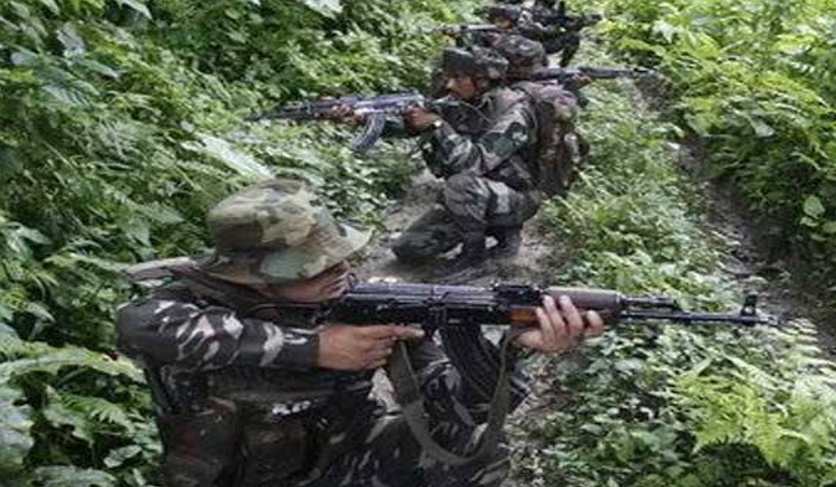
1. Indo-Pakistan War of 1971
- The first time the Para Commandos saw action was in the 1971 Indo-Pak War, where they performed admirably. The 9th Parachute Regiment saw action at Mandhol in a daring raid on a Pakistani artillery position. Six 122mm cannons belonging to the Pakistan Army’s 172 Independent Battery were destroyed in this attack. Apart from the loss of guns, ammunition, and other vital equipment, the Pakistanis lost 37 people, were wounded 41 times, and suffered a significant loss of face. The 9 Para Cdo was awarded the Battle Honor of Mandhol for this raid, which came at a critical time and allowed the 25th Infantry Division to continue their operations against Daruchian (a Pakistani-occupied position). In Bangladesh, the 50 (Independent) Parachute Brigade’s 2 PARA BATTALION Group carried out India’s first airborne assault operation to capture Poongli Bridge in Mymensingh District near Dacca. They were the first unit to enter Dacca as a result. 2 PARA received the Battle Honor of Poongli Bridge and the Theater Honour of Dacca for this engagement.
2. Operation Bluestar-1984
- The Para Commandos took part in Operation Blue Star in 1984. They were accused of driving Sikh extremists out of Punjab’s Golden Temple. The duty of assaulting two portions of the temple was handed to 80 men of 1 Para Cdo, one of which required divers. However, insufficient intelligence on the strength of the militants, who were trained by Gen. Shabeg Singh himself, operating in low light, the traditional way of the attack, and a lack of high precision CQB (close quarter combat) skills all contributed to the mission’s failure. The diver mission was called off when the first team became stranded. As a result of the commandos’ failure to complete their objectives, tanks were called in to finish the job. The Anti-Terror National Security Guards were formed as a direct result of this action, and they have particular skills in close-quarters urban combat.
3. Sri Lanka in 1987
The late 1980s saw the Para Commandos in action in Sri Lanka, as part of Operation Pawan. However, lack of proper planning by the Indian Peace Keeping Force (IPKF) and insufficient intelligence on the LTTE’s whereabouts, led the initial heli-borne assault on Jaffna University on 11 October 1987 to be a tragic failure.
Six soldiers lost their lives in that ill-fated mission, but unlike the Sikh Light Infantry who lost their lives gallantly fighting to the last, the Para commandos due to their superior training, took refuge under a house, after they got misguided by a youth who offered his service to help the commandos track Prabhakaran by taking them for a wild goose chase. They engaged the enemy for a full 24 hours and picked up all their dead with their weapons after reinforcements arrived the next morning.
After the failed assault on Jaffna City, the 10 Para Cdo participated in November 1987 for a heli-borne assault in the town of Moolai, 14 miles to the north-west. 25 LTTE guerrillas were killed and an arms depot seized. In order to give the commandos battle experience, 1 Para Cdo was rotated home in early 1988 and replaced by 9 Para Cdo.
This battalion was scheduled to return home in June 1988, but the tour of duty was extended due to a planned air assault into the coastal swamps around Mullaitivu. The mission was a great success, in that it located several arms caches. The 9 Para Cdo also provided 12 men for the security of the Indian High Commission in Sri Lanka.
4. Surgical Strike, 2016
- India said on September 29, 2016, that it has carried out surgical strikes across the Line of Control in Pakistan-administered Kashmir, inflicting “substantial casualties.” Pakistan denied India’s claim, claiming that Indian troops did not cross the Line of Control and only engaged in border skirmishes with Pakistani troops. According to Indian media, the death toll ranged from 35 to 70. Pakistan recognized the deaths of two soldiers and the injuries of nine others. India stated that one of its soldiers was detained by Pakistan, but denied that this was related to the incident or that any of its soldiers had been killed. On the 18th of September, four militants had assaulted the Indian army in Uri in the Indian state of Jammu and Kashmir, killing 19 soldiers. Despite skepticism and conflicting accounts, India’s declaration of the alleged raid on September 29 marked the first time the government had openly acknowledged its forces breaching the Line of Control. In the days and months that followed, India and Pakistan exchanged fire along the Kashmir border, resulting in scores of military and civilian casualties on both sides.
Awards
- Out of the many gallantry awards awarded to various armed personnels across the Para Special Forces division, the outline numbers for the most popular are as follows:
- These include:
- Ashoka Chakra – 8.
- Maha Vir Chakra – 11.
- Kirti Chakra – 13.
- Param Vishisht Seva Medal – 07.
- Uttam Yudh Seva Medal – 06.
- Ati Vishisht Seva Medal – 13.
- Vir Chakra – 61.
- Shaurya Chakra – 53.
1. Maha Vir Chakra
Under Operation Bakshi of the 1965 war, Lt. General (then Major) Ranjit Singh Dyal of the 1 Para (Special Forces) conquered Haji Pir Pass.
During the 1971 war in Pakistan, Brigadier (then Lt. Colonel) Swai Bhawani Singh of 10 Para (Special Forces) was credited with capturing significant sections of Chachro and Virawah.
Maj Gen (Then Lt Col) Kulwant Singh Pannu of 2 PARA (Maratha), now Special Forces, led 2 PARA in the Airborne Assault on Poongli Bridge in Tangail in 1971, and then led the Indian Army into Dhaka with his battalion.
Brigadier (then Lt. Colonel) Russell Lazarus of the 3rd Parachute Regiment for establishing the 3rd Parachute Regiment in Agra and participating in the 1965 War.
2. Vir Chakra
- In 1988, Maj. General (then Lt. Colonel) Dalvir Singh, of 10 Para (Special Forces) for the rescue of 74 SF personnel as well as the infantry personnel trapped, along with recovery of 6 fatal SF casualties during the Operation Jaffna University Helidrop in 1987.
3. Ashok Chakra
Brigadier Russell Lazarus MVC of the 3rd Parachute Regiment, Military Attaché at the Indian High Commission in Pakistan, was arrested in 1971 for espionage activities leading up to the 1971 War.
Captain Arun Singh Jasrotia of the 9th Parachute Regiment (Special Forces) was awarded the posthumous award in 1995 for executing terrorists in the Lolab Valley during Operation Rakshak.
Major Sudhir Kumar Walia of the 9 Para (Special Forces) was awarded a posthumous medal in 1999 for single-handedly killing nine terrorists during Operation Rakshak in Kashmir’s Haphruda woodland.
Conclusion
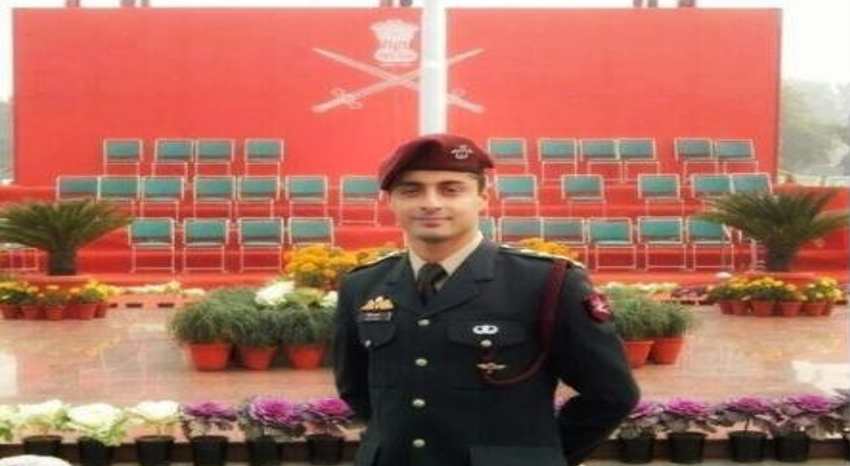
- India has used Special Operations Forces tactically in numerous theatres of war over the years, as is obvious. Their missions have always been approved after taking into account the intricate link between India’s security and foreign policies never in isolation. Despite their reported stationing near the border, it remains to be seen whether the Forces will be pressed into action in the current context of Chinese incursions in Eastern Ladakh and the resulting chaos along the LAC. Regardless of how difficult times we may get into, with Para Special Forces guarding our borders and the country, safety is guaranteed.
Top 13 Interesting Facts About Para Special Forces
To become a Para Commando (Special Forces), all troops must first qualify as Paratroopers to demonstrate their abilities, and once selected, individuals may choose the most dangerous SF selection.
The volunteers refer to all Indian paratroopers. All personnel are subjected to a three-month probationary period during which their physical and mental abilities are assessed.
Personnel who pass these tests are sent to the Agra-based PTS (Paratroopers Training School) (UP). The PARA Wings and the Maroon Beret can be worn after five jumps (including one at night). Personnel who choose Para (SF) receive additional specialized training over the course of three months to prepare them for their role in a variety of situations.
It is one of the world’s longest and most difficult phases, with personnel subjected to sleep deprivation, humiliation, weariness, as well as mental and physical abuse. Deaths have been reported during the selecting procedure. The Rejection Rate, on the other hand, is quite high, approaching 80%.
The Regiment’s operational efficiency and physical fitness must be maintained at the highest possible levels. To complete the specified operational responsibilities, the selection provides manpower that is comparatively young, physically strong, mentally robust, very clever, superiorly innovative, and highly successful. The Parachute Regiment is the only regiment in the Indian Army to have participated in every operation both inside and outside of India.
The soldiers of the German African Corps in Africa gave them the nickname “RED DEVILS.” The moniker “RED ” comes from the “MAROON BERET” worn by paratroopers and has since become a trademark for all paratroopers around the world.
To be a Para (Special Forces), All personnel are first required to qualify as Paratroopers to show their skills and once selected, the personnel may choose to the deadliest SF Selection. All Indian Paratroopers are referred to as volunteers. There is a Probationary Period of 03 months for all the personnel to judge their Physical & Mental abilities.
It is one of the longest and the toughest phase in world where the personnel’s are exposed to sleep deprivation, humiliation, exhaustion, mental and physical torture. The selection has reported deaths in the process itself. The Rejection Rate is very high and is close to 80%.
The Regiment needs to be kept at an optimum level of Operational Efficiency and Physical Fitness. The selection furnishes manpower which is comparatively young, physically fit, mentally robust, extremely intelligent, superiorly innovative and highly successful to accomplish the assigned operational tasks. The Parachute Regiment is the only regiment in the Indian Army to have taken part in each and every operation in and outside the country.
Day-to-day training exercises for Para Personnel include firing while rolling and snaking. The Special Forces Battalions are structured differently and are primarily used for Special Missions and clandestine operations in enemy territory, with the ability to operate in small groups of five or six commandos.
9 PARA SF was bestowed the title of the “Bravest of the Brave” in 2001 and it has 4 Ashok Chakra awardees which speaks of the bravery and prowess of the unit which is virtually unmatched in the Indian Army.
Para SF Commandos preached for their excellence are not actually all-rounder’s. They specialize in a particular set of skills. Some are trained as Combat Divers while some specialize in Combat Free-Fall. Some have Intel gathering skills while some are specialized in sniping and other sorts of skills.
Para SF has emphasized on development over a wide range of capabilities from Urban Warfare to Intel gathering and more by serving on deputation in some units like National Security Guards.
Some FAQs Or Also Ask Question
Are there 4 Para Special Forces?
The operatives of 4 Para Special Forces are that elite wing of Special Forces which are trained the best for mountain-war exigencies or counter-terrorism operations. This is the same wing of the forces which were used during the Indian Surgical Strike in the year 2016.
What is the salary of Para Commando?
The salary of a Para SF soldier ranges in between 3.6 lakh per annum to 4.6 lakhs per annum and is subject to multiple increments in proportion to experience years.
What is Para Special Force in India?
These are the special forces of the Indian Army and are trained to combat tough war time situations with ease and valour.
Which is the best Para SF?
Para SF 4 and Para SF 9 are the two divisions of Para Special Forces considered ‘the best’ for cross-border or counter-terrorism exigencies.
Can IPS join Para SF?
No. Despite the fact that Para Special Forces come under the direct control and governance of ‘Ministry of Home Affairs’, these forced are headed by IPS officers to design policies and procedures for following protocols. Unlike the Indian Police System, IPS officers cannot be directly recruited inside the Special Forces.
Para Commando Training Centre is located in?
The Indian Army’s Special Forces Training School is the training institution for Indian Army special forces, based at Nahan, a hill town in Himachal Pradesh. This is also the largest institutional training center for Para Special Forces commandos.

